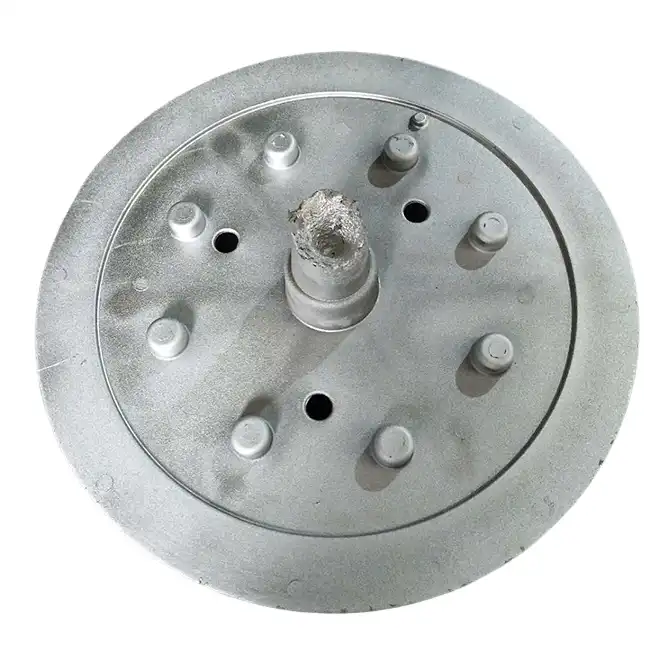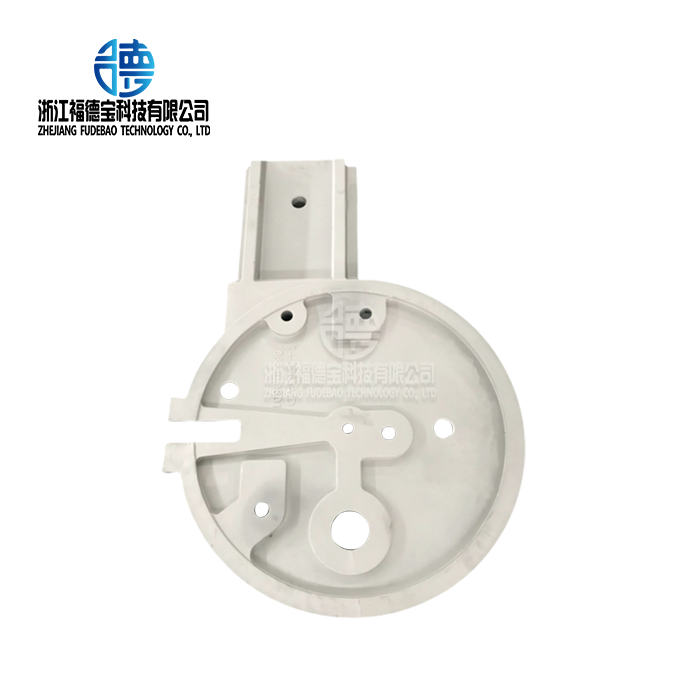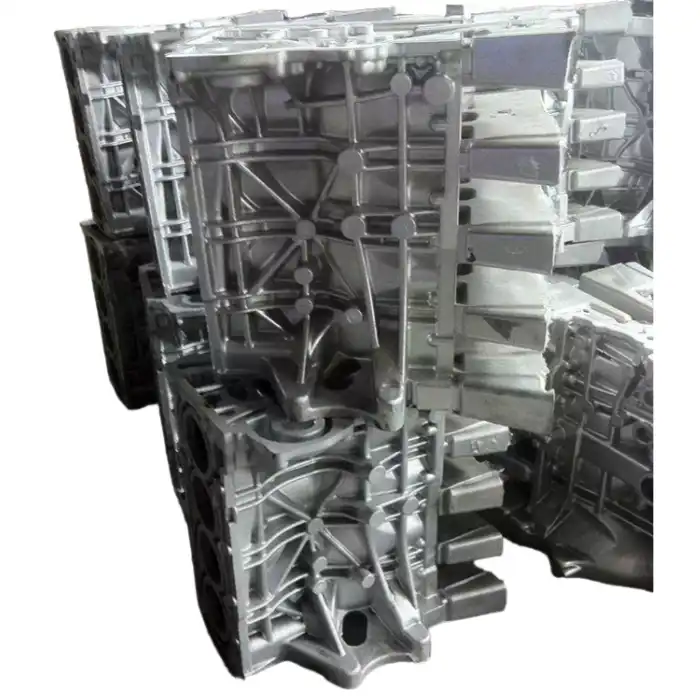Understanding Low Pressure Casting and Alloy Selection
The Low Pressure Casting Process
Low pressure casting is a sophisticated metal forming technique that offers numerous advantages over traditional casting methods. This process involves applying controlled pressure to molten metal, forcing it upwards into a mold cavity. The gentle filling of the mold results in reduced turbulence and gas entrapment, leading to higher quality castings with improved mechanical properties.
One of the key benefits of low pressure casting is its ability to produce complex, thin-walled components with excellent dimensional accuracy. This makes it particularly suitable for applications in industries such as automotive, aerospace, and precision engineering, where tight tolerances and high-performance parts are essential.
Factors Influencing Alloy Selection
Choosing the right alloy for low pressure casting applications involves considering several critical factors. These include:
- Mechanical properties required for the final product
- Thermal characteristics of the alloy
- Corrosion resistance needs
- Cost-effectiveness and availability of the material
- Ease of machining and finishing
Each of these factors plays a vital role in determining the most suitable alloy for a specific application. For instance, if high strength-to-weight ratio is a priority, aluminum alloys might be the best choice. On the other hand, if superior wear resistance is needed, certain copper alloys could be more appropriate.
Importance of Material Properties in Low Pressure Casting
The success of low pressure casting heavily relies on the material properties of the chosen alloy. Key properties to consider include:
- Fluidity: The ability of the molten metal to flow and fill intricate mold cavities
- Solidification characteristics: How the alloy behaves as it transitions from liquid to solid state
- Thermal conductivity: Affects cooling rates and final microstructure
- Coefficient of thermal expansion: Impacts dimensional stability during cooling
Understanding these properties helps in predicting how an alloy will perform during the casting process and in the final application. It's crucial to select an alloy that not only meets the mechanical requirements of the end product but also behaves well during the casting process itself.

Top Alloys for Low Pressure Casting Applications
Aluminum Alloys: Versatility and Performance
Aluminum alloys are among the most popular choices for low pressure casting applications due to their excellent combination of properties. These alloys offer a high strength-to-weight ratio, good corrosion resistance, and excellent fluidity, making them suitable for producing complex, lightweight components.
Some of the best aluminum alloys for low pressure casting include:
- A356 (AlSi7Mg): Known for its excellent castability and good mechanical properties
- A357 (AlSi7Mg0.6): Offers higher strength than A356 due to increased magnesium content
- AlSi10Mg: Provides a good balance of strength and ductility
These alloys are widely used in automotive and aerospace industries for components such as cylinder heads, wheels, and structural parts. Their ability to produce thin-walled, complex geometries with high dimensional accuracy makes them ideal for many low pressure casting applications.
Magnesium Alloys: Lightweight Champions
Magnesium alloys are gaining popularity in low pressure casting applications, especially where extreme weight reduction is a priority. These alloys offer the lowest density of all structural metals, combined with good strength and excellent machinability.
Some notable magnesium alloys for low pressure casting include:
- AZ91: Offers a good balance of castability, strength, and corrosion resistance
- AM60: Known for its excellent ductility and impact resistance
- ZK61: Provides high strength and good creep resistance at elevated temperatures
Magnesium alloys are particularly attractive for applications in the automotive and aerospace industries where weight reduction is crucial for improved fuel efficiency and performance. However, they require careful handling during the casting process due to their reactivity with oxygen.

Copper Alloys: Strength and Conductivity
Copper alloys, including various types of bronze and brass, are excellent choices for low pressure casting applications that require high strength, wear resistance, and thermal or electrical conductivity. These alloys offer unique properties that make them suitable for specialized applications.
Some copper alloys well-suited for low pressure casting include:
- Bronze alloys (e.g., C95400): Offer high strength and excellent wear resistance
- Brass alloys (e.g., C85800): Provide good machinability and corrosion resistance
- Copper-nickel alloys: Known for their superior corrosion resistance in marine environments
These alloys are commonly used in applications such as pump impellers, marine propellers, and electrical components where their unique combination of properties is highly valued. The low pressure casting process allows for the production of complex copper alloy parts with minimal porosity and excellent surface finish.
Optimizing Alloy Performance in Low Pressure Casting
Heat Treatment and Microstructure Control
To maximize the performance of alloys in low pressure casting applications, proper heat treatment and microstructure control are essential. Heat treatment processes can significantly enhance the mechanical properties of cast components by altering their microstructure.
For aluminum alloys, common heat treatments include:
- Solution heat treatment: Dissolves alloying elements into solid solution
- Quenching: Rapidly cools the material to retain the dissolved elements
- Aging: Allows controlled precipitation of strengthening phases
These treatments can dramatically improve strength, hardness, and ductility. Similarly, for magnesium and copper alloys, specific heat treatment protocols can be employed to optimize their properties for the intended application.
Alloying Additions and Modifications
Fine-tuning alloy compositions through careful alloying additions can significantly improve casting performance and final product properties. For example:
- In aluminum alloys, small additions of strontium or sodium can modify the eutectic silicon structure, improving ductility and reducing porosity
- For magnesium alloys, rare earth elements like cerium or neodymium can enhance creep resistance at elevated temperatures
- In copper alloys, additions of elements like nickel or silicon can improve strength and wear resistance
These modifications allow for the customization of alloy properties to meet specific application requirements while maintaining good castability in the low pressure casting process.
Process Parameter Optimization
Optimizing process parameters is crucial for achieving the best results with any alloy in low pressure casting. Key parameters to consider include:
- Melt temperature: Affects fluidity and solidification characteristics
- Mold temperature: Influences cooling rate and final microstructure
- Pressure profile: Controls metal flow and reduces turbulence
- Cooling rate: Impacts grain structure and mechanical properties
By fine-tuning these parameters, manufacturers can minimize defects, improve surface finish, and enhance the overall quality of cast components. This optimization process often requires a combination of theoretical knowledge, practical experience, and advanced simulation tools to achieve the best results for each specific alloy and application.
Conclusion
Selecting the best alloys for low pressure casting applications is a critical decision that impacts product quality, performance, and cost-effectiveness. Aluminum alloys, magnesium alloys, and copper alloys each offer unique advantages, making them suitable for a wide range of applications. By understanding the specific requirements of the application and the properties of these alloys, manufacturers can make informed choices to achieve optimal results. Furthermore, through proper heat treatment, alloy modifications, and process optimization, the full potential of these materials can be realized in low pressure casting processes, leading to high-quality, high-performance components for various industries.
FAQs
What are the main advantages of low pressure casting?
Low pressure casting offers reduced turbulence, minimal gas entrapment, and the ability to produce complex, thin-walled components with high dimensional accuracy.
Which alloy is best for lightweight automotive components?
Aluminum alloys like A356 and A357 are excellent choices for lightweight automotive components due to their high strength-to-weight ratio.
Can magnesium alloys be safely used in low pressure casting?
Yes, magnesium alloys can be safely used with proper precautions to prevent oxidation during the casting process.
Expert Low Pressure Casting Solutions | Fudebao Technology
At Fudebao Technology, we specialize in high-quality low pressure casting solutions using advanced alloys. Our state-of-the-art facilities and expert team ensure precision manufacturing for automotive, industrial, and aerospace applications. As a leading supplier and manufacturer, we offer customized solutions to meet your specific needs. Contact us at hank.shen@fdbcasting.com to discover how our expertise can elevate your projects.
References
Smith, J. K. (2020). Advanced Alloys for Low Pressure Casting: A Comprehensive Guide. Journal of Materials Engineering and Performance, 29(4), 2145-2160.
Johnson, R. M., & Williams, L. A. (2019). Optimizing Process Parameters in Low Pressure Casting of Aluminum Alloys. Materials Science and Engineering: A, 750, 12-25.
Chen, X., & Liu, Y. (2021). Recent Developments in Magnesium Alloys for Low Pressure Casting Applications. Light Metals Technology Conference Proceedings, 235-248.
Brown, T. E., et al. (2018). Copper Alloys in Modern Low Pressure Casting: Challenges and Opportunities. International Journal of Metalcasting, 12(3), 516-530.
Thompson, S. A. (2022). Heat Treatment Strategies for Enhancing Mechanical Properties of Low Pressure Cast Components. Materials Characterization, 183, 111621.
Garcia-Hinojosa, J. A., et al. (2017). Effect of Alloying Elements on the Performance of Low Pressure Cast Aluminum Alloys. Metallurgical and Materials Transactions A, 48(7), 3423-3435.











